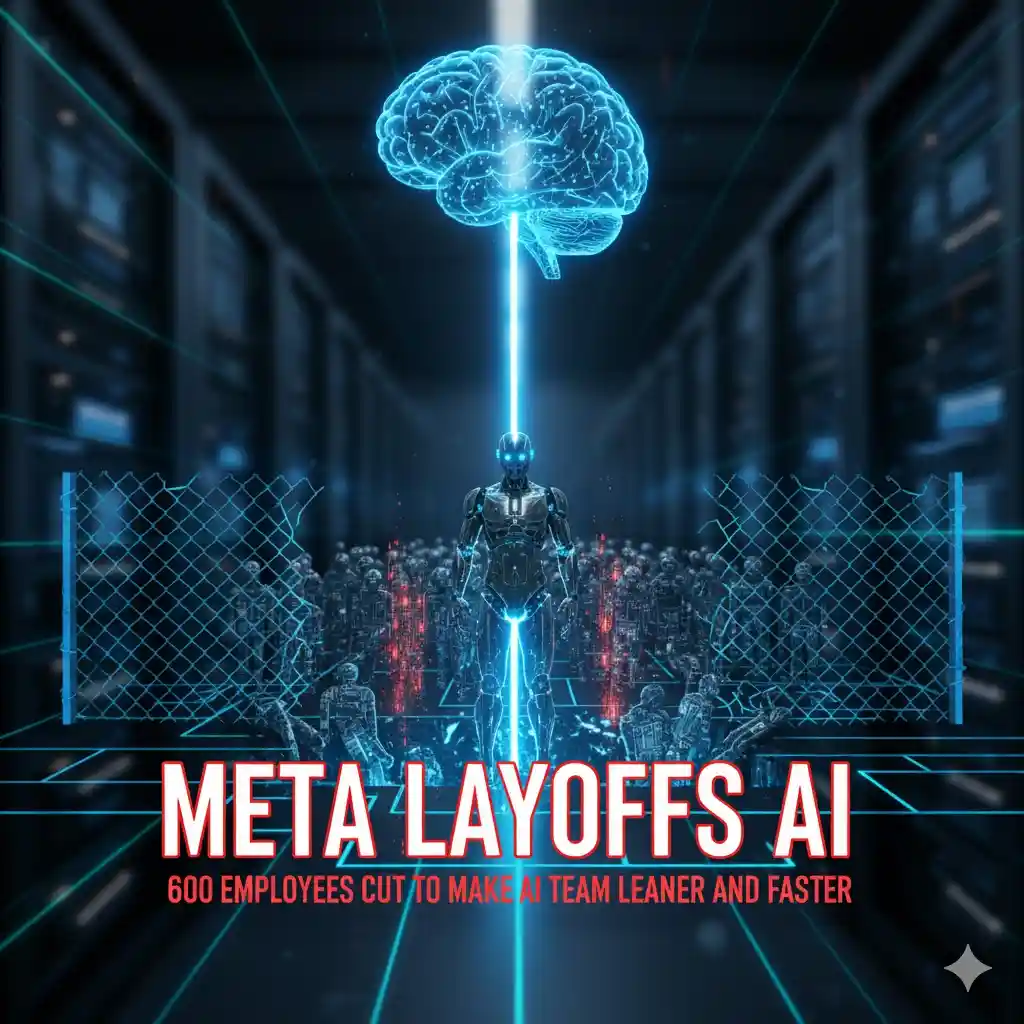On October 22, 2025, Meta Platforms announced that it is laying off around 600 employees from its AI division, called Superintelligence Labs. The move is led by Chief AI Officer Alexandr Wang, who said the goal is to make the team smaller but more efficient. He added that this change will help the remaining team make faster decisions and give each person more responsibility.
Read Also: Everything You Need to Know About Higgsfield AI in 2025

Which Teams Were Affected?
- FAIR (Facebook Artificial Intelligence Research): Meta’s main AI research unit lost several employees.
- AI Product and Infrastructure Teams: People working on AI products and their support systems were also affected.
- Superintelligence Labs: This advanced AI team saw the biggest impact.
Important: The TBD Lab, which works on new AI models like LLaMA, was not affected and is still hiring.
Why Did This Happen?
Meta said the AI division had become “overstaffed,” meaning there were too many people, which slowed down decisions. Cutting some roles is meant to make the team more effective and faster.
What’s Next?
Even after the layoffs, Meta is continuing its work in AI. Wang said the changes will give remaining employees more responsibility and make the team stronger. The company is still hiring in the TBD Lab and remains committed to building advanced AI technologies.
Future Outlook
Despite the layoffs, Meta remains committed to its AI ambitions. Wang highlighted that the changes would empower the remaining employees with greater responsibility, enabling them to deliver more impactful results. The company continues to invest in new initiatives, particularly in the TBD Lab, signaling a continued focus on advancing AI technologies.
Meta’s recent move reflects a broader trend in the tech industry, where companies are optimizing their teams to balance innovation with efficiency amid economic pressures.


It’s interesting to see Meta focusing on a leaner AI team, but I wonder how this will affect ongoing projects like LLaMA. With fewer people, will they be able to continue supporting such ambitious models effectively?